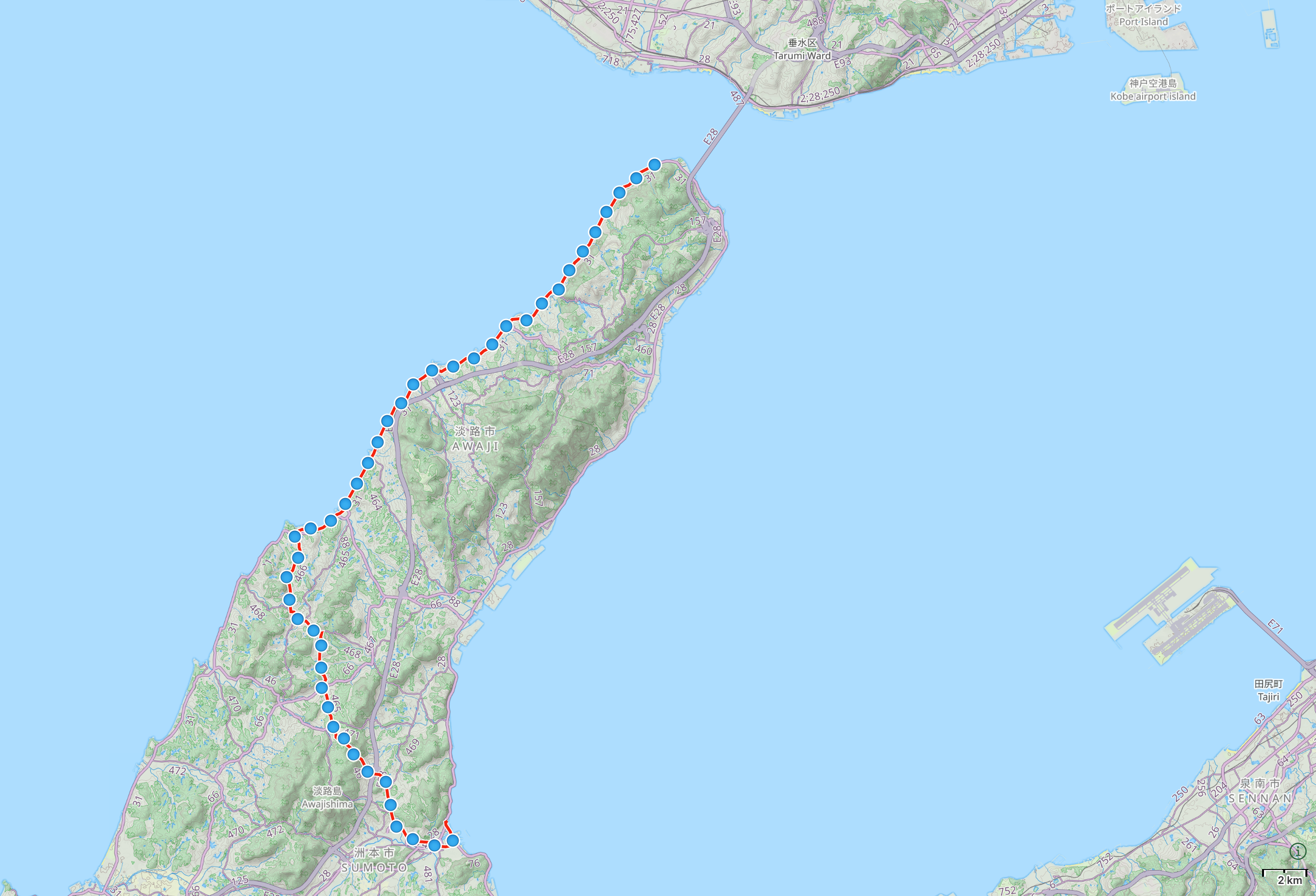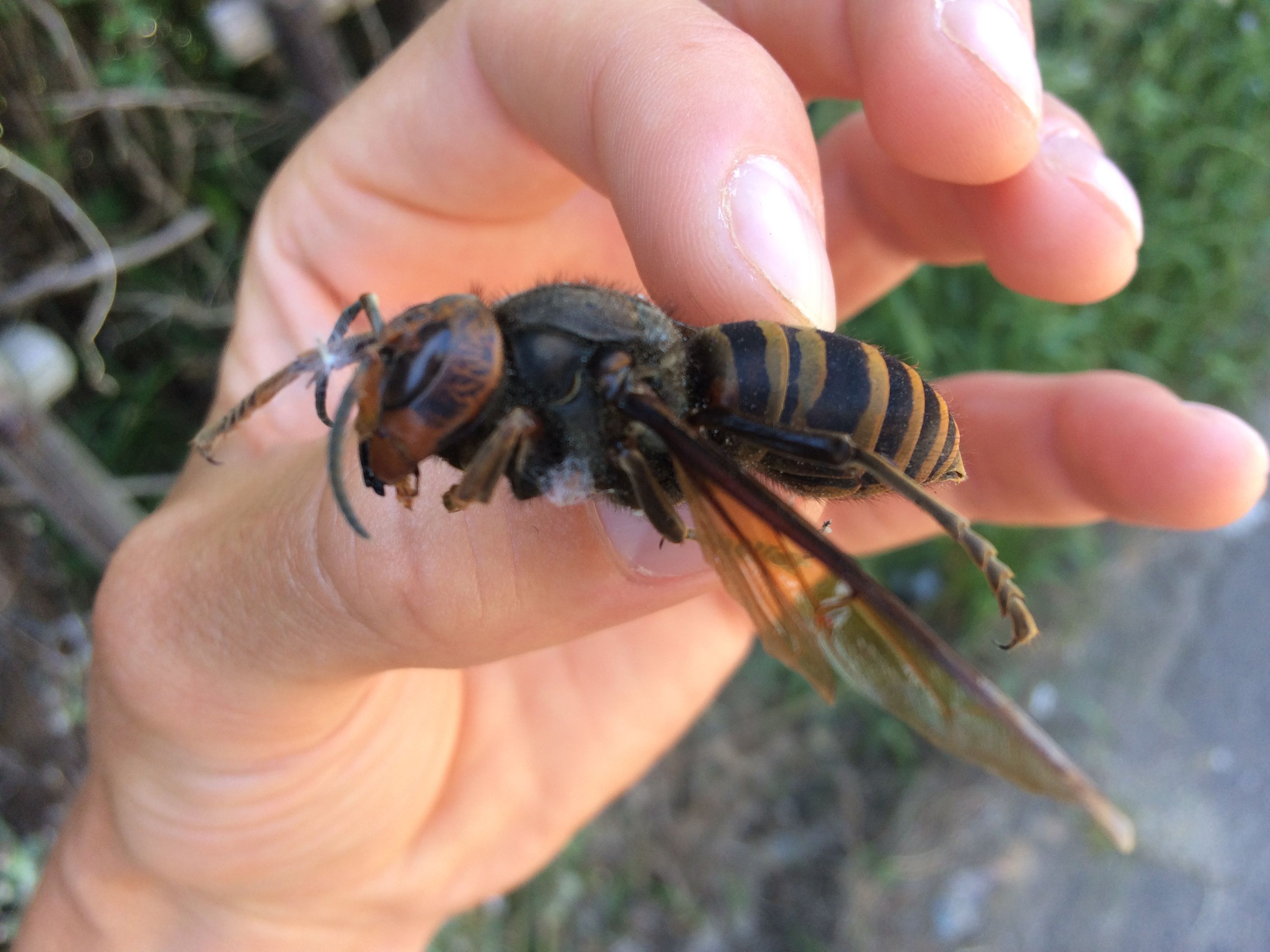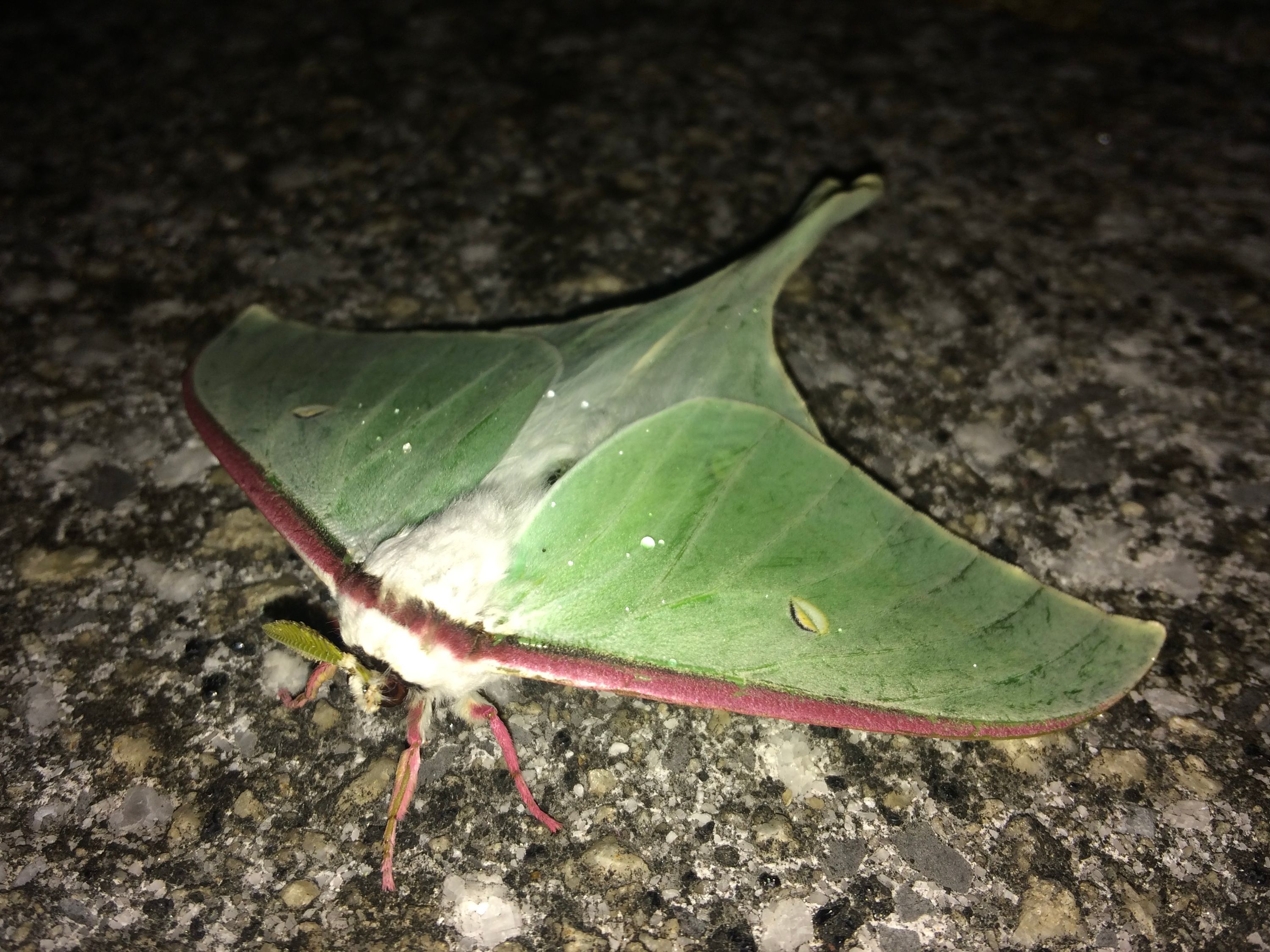Day 41 (May 23, 2017)
Sumoto, Awaji Island, Hyōgo → Esaki Lighthouse, Awaji Island, Hyōgo


“When I catch a hornet these days,” Stephen Wheeler said, “I just throw them to the bees.” Japanese honeybees may be tiny, but they can kill the world’s largest hornets by enveloping them in a tight ball and cooking them alive.
Stephen, a great Kiwi who has lived on the island for a quarter of a century, has been keeping them for years. “My wife hates them,” he said, “she won’t even touch the honey.”
Over a plate of chicken, which he graciously paid for, Stephen told me about the back roads and the petty cruelties of island life, then we retreated to the riverside with a couple of beers.
“You know what the Japanese name for the giant hornet, ōsuzumebachi, means?” I didn’t. “Great sparrow bee.” With a big smile, he cycled off into the night.


“The bridge was very beautiful, shining there in the late afternoon light, but it was also lethal, like an enormous razor,” Donald Richie wrote in the afterword of The Inland Sea, and when I turned a corner and saw the world’s greatest suspension bridge in the midnight light, it was like the curve of a Japanese sword, the towers an impossible 1,991 meters apart, a magnificent apparition of an entire highway floating in the air, above the sea, above the mountains of Kōbe. I made my bed in a pavilion under the Esaki Lighthouse, the alien magic of 1871. White moths swirled like warm snow in the thick sea air. It was a strange beauty, something perfect, something empty. Later, the rain started.

